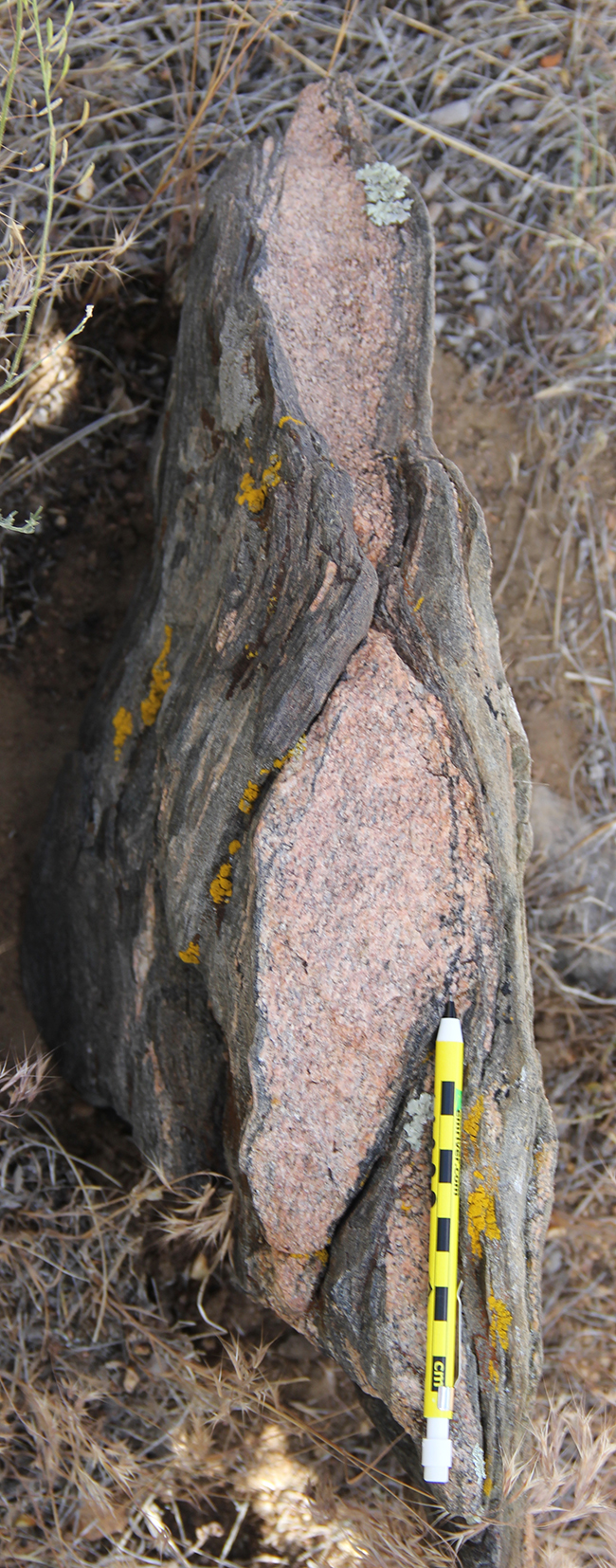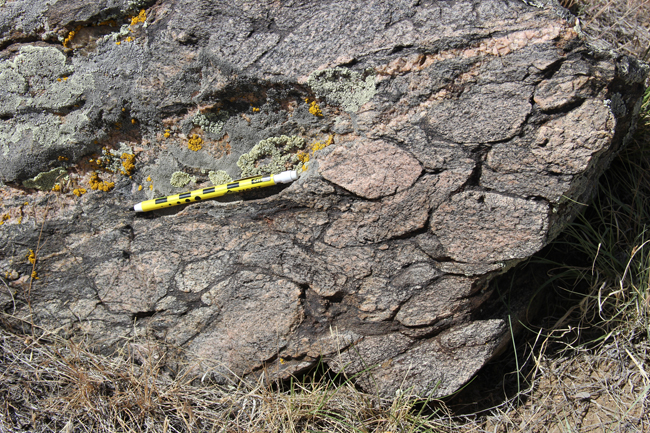A final post from my visit to the Laramie Range with Bob Bauer and Fred McLaughlin earlier in the summer -Recall that there is schist and granite at this site, and much of the granite shows cross-cutting or inclusive relationships indicating it is younger than the schist, while still younger mafic dikes cross-cut than the granite. Both exhibited folding. However, in other places, we observed the opposite: granite inclusions within the schist – is this an example of a true inclusion (and thus suitable for relative dating)? Or are the granite “inclusions” really dismembered chunks of a dike (boudins), which suggest the opposite relative age relationship?
We spotted some that displayed pretty clear boudin-like anatomy, with pinched “necks” and elongate forms with the X-axis parallel to foliation:

Other examples, though, were more enigmatic: here, the granite chunks appear rounded and only slightly flattened (at least on this exposure plane):

Some appear to be more competent than their neighbors, and their boundaries impinge – it looks for all the world like a deformed conglomerate wherein a pelitic (clay-derived) matrix surrounds granite cobbles.
This example, a flattened clast along strike from a more robust clast, appears for all the world like a giant tadpole or spermatozoa, swimming to the right:

So what do we make of this? A couple possibilities (competing hypotheses) occur to me: (1) the granite and the deformation are syntectonic – some of the earlier part of the granite was deformed due to tectonism, while some of the later (or less lucky?) granite cross cut the schist. Another potential explanation is (2) that there are multiple granites here – an earlier granite that was crystallized then eroded, producing cobbles of granite that were included in subsequent sedimentary deposits, which were later deformed and intruded by a new and totally unrelated granite. The way I would test that would be to sample the different granites: dikes, putative boudins, and putative cobbles, and see if they match up or differ in terms of their petrography, geochemistry, and mineral ages.
